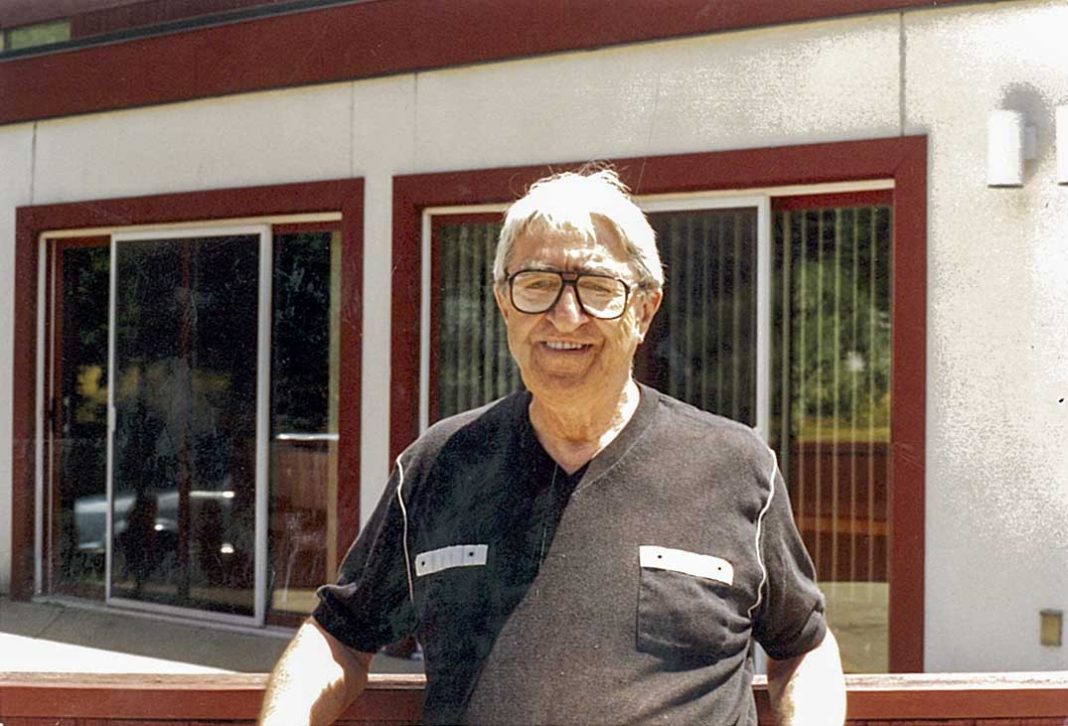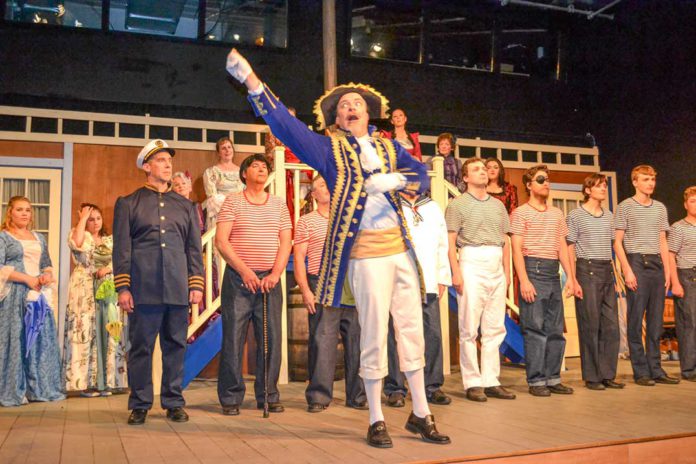EDITOR’S NOTE: The following story contains information about sexual abuse that took place in Wiikwemkoong during the mid-to-late 20th century. This information may be disturbing to those who have suffered from sexual abuse. Support is available 24/7 through the First Nations and Inuit Hope for Wellness Help Line at 1-855-242-3310 or the Manitoulin Family Resources crisis line at 1-800-465-6788.
WIIKWEMKOONG – Wiikwemkoong elder Mishkee Adzawin Enagadong (Medicine Life Keeper), whose English name is Josh Eshkawkogan, is a regular feature at Anishinaabe ceremonies and frequently offers his assistance to community members who need culturally centred healing. His journey did not, however, begin in an environment that celebrated his Anishinaabe culture.
Achieving mino-bimaadiziwin (the way of a good life) was especially challenging for Mr. Eshkawkogan after he suffered sexual abuse by Brother Norman Hinton, a Jesuit who served in Wiikwemkoong.
Brother Hinton is named in a pending lawsuit alongside a Brother O’Meare and known sexual abuser Father George Epoch, with the aim of providing Wiikwemkoong-based victims appropriate aftercare to deal with their childhood trauma.
Mr. Eshkawkogan agreed to share his story publicly with The Manitoulin Expositor in the hopes that other victims may find the strength to advance the process of their own healing.
Mr. Eshkawkogan grew up in a family that was rocked by dysfunction and alcoholism. His parents were part of the generation that attended residential school, a system that aimed to assimilate Indigenous children into ‘civilized’ society and led to a vast weakening of Indigenous cultures across Canada. The ‘Anishinaabe way’ was never the subject of discussions at his home.
Through policies such as punishing children from speaking their Native language and banning certain ceremonies, many aspects of traditional culture could not be passed on to future generations to provide the sense of belonging, grounding and connection to one’s heritage that are crucial to living a healthy and well-balanced life.
Mr. Eshkawkogan was nine years old when the abuse began. He started school in Rabbit Island until Grade 4, then transferred to the Pontiac School in Grade 5. At that time, he began to become more active with the Jesuit community in Wiikwemkoong.
“One of those (activities) was being an altar boy. It was something that we all wanted to do as young men, and there was eventually even young girls that came in,” said Mr. Eshkawkogan. “I guess it was something that we were looking for, as some place where we belong.”
The Jesuits had numerous churches throughout Wiikwemkoong in addition to their schools and have mostly been a well-respected group in the territory to the present day.
Mr. Eshkawkogan was seven when he first expressed interest in becoming an altar boy. That position was so desirable that many of his peers would race over to the church after school to try to be the first one to arrive and get the honour of helping out with a mass. But Mr. Eshkawkogan was told he was too young at age seven.
“At the time when I was told I was too young, I think I was being selected in a process of ‘who won’t say anything?’ That’s what I kind of feel, now that I know,” he said. “It’s probably a method in regards to how they screen their own victims.”
Brother Hinton, like many of the other church leaders in the territory, had a strong rapport with community members.
“He was very well-known; he was very well-liked. He’d always hang around with all the children, and we were part of that,” said Mr. Eshkawkogan.
Brother Hinton often brought the children on trips to bazaars or out swimming, piling all of them into the back of his Club Wagon.
The victims of the Jesuits named in the lawsuit came from vulnerable environments. The way Mr. Eshkawkogan described his upbringing in a household marred by dysfunction and a lack of connection to Anishinaabe traditions was hardly a unique experience, with so many parents also being residential school survivors who had large swaths of their culture ripped from their lives.
“There was a lot of us children that were running away from our homes on the odd night,” said Mr. Eshkawkogan, adding that many of the families in the neighbourhood were seen as abusive. “I guess we were looking for someplace where we could go. The rectory was one of the things we thought that was going to be a place where you could go get sanctuary.”
The rectory seemed to be a safe space because of the public demeanour of Brother Hinton. Mr. Eshkawkogan said the brother always appeared to be doing good deeds for the community and especially for children.
“We put them on a pedestal,” said Mr. Eshkawkogan. “We definitely thought wrong, that’s for sure.”
Mr. Eshkawkogan described an instance when he went missing for a few hours and his family went looking for him. His oldest brother went to the rectory and peered through Brother Hinton’s window, where he spotted Mr. Eshkawkogan performing a sex act on Brother Hinton.
Based on Mr. Eshkawkogan’s recollection, there were at least some community members who knew the true character of these men. This understanding came when one of Mr. Eshkawkogan’s brothers also went missing.
His mother and great aunt were already concerned when the clock struck 10 pm and they hadn’t heard from him, so they called friends and relatives for advice. One caller told them Mr. Eshkawkogan’s brother was in Kaboni and was planning to stay the night there in the rectory.
The head of the Kaboni church at that time was Father George Epoch.
“I noticed how frantic those two ladies were, my mom and auntie. They took off and went to Kaboni right away to get my brother,” said Mr. Eshkawkogan. “Lots of words are said behind closed doors. I’m positive they knew what could happen or what did happen.”
As Mr. Eshkawkogan got older, he began to grow apart from the church, though not entirely by his own choice.
“I was jealous because of the (younger) boys that were closer to church and always with the brother,” said Mr. Eshkawkogan.
He had gotten older and found himself no longer getting attention from Brother Hinton. Unsatisfied with the way he was feeling, Mr. Eshkawkogan travelled to the church to ask the brother for advice on his newfound jealousy.
He was not the only one who was there to speak with Brother Hinton.
“There was nobody at the church so we went down to the rectory. We knocked and (Brother Hinton and a superior) were already having a discussion in the dining area,” said Mr. Eshkawkogan. “(Brother Hinton) came out after and told us that ‘I can’t have you guys coming to the rectory no more.’ … but he never said why.”
Losing his ability to be close with Brother Hinton was psychologically devastating. Mr. Eshkawkogan had believed he and Brother Hinton had a relationship, and the confusion and emotional pain when the brother moved onto other boys left him with a broken understanding of relationships for years afterward.
Mr. Eshkawkogan left Wiikwemkoong relatively young, when he was 18 or 19 years old.
“Maybe that was the reason why I wanted to leave at the same time. Just to get away from the community where it was happening,” he said. “Being able to get away from the community was something that had to happen for me to understand my traumatization.”
Mr. Eshkawkogan went through a divorce in the 1980s and was in another relationship, and started feeling like he was repeating the same behaviour that he had experienced in his “first relationship” with Brother Hinton.
“That’s when I started looking at, ‘who am I? What am I doing?’ You can’t live on sex, drugs and rock and roll all your life and that’s where I was. I was working in the bush and that’s when it hit me, that I was sexually abused when I was at that age,” said Mr. Eshkawkogan. “That’s why I couldn’t have a relationship. Because I didn’t even know what a relationship was. The only relationship I knew was I had feelings for this individual that was abusing me and abusing the community, in a sense.”
Mr. Eshkawkogan took his realization as a way to start healing from his childhood abuse. Through that process, he also found a way of strengthening others. Mr. Eshkawkogan’s journey to acceptance and eventually becoming a respected elder will be shared next week.
•••
The Expositor will be following the new developments in this case as more information becomes available, as well as sharing stories and past records that bring context to the crimes of Father George Epoch, Brother Norman Hinton and Brother O’Meare from their time in Wiikwemkoong.




